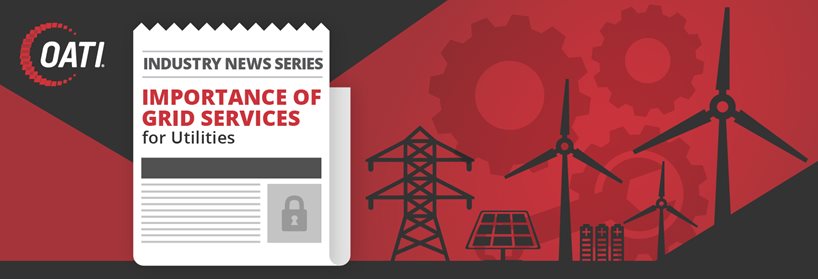Home » Blog » Grid Modernization » Grid-Edge Grid Services: Benefits to Utilities and Prosumers
Grid-Edge Grid Services: Benefits to Utilities and Prosumers
Power systems are undergoing a significant transformation with the declining cost of solar PV and battery energy storage systems, coupled with available incentives, the Electrification of Transportation (EoT), and the ubiquitous availability of real-time data connectivity at low costs.
Declining costs and market/customer demand, in part due to climate-related concerns, are resulting in replacement of coal-based generation with natural gas and renewables such as solar and wind generation. The intermittency of renewable generation, at the bulk supply level and at the edge of the distribution grid, is resulting in a greater demand for balancing energy, and the so-called grid services.
Grid services are an expanded set of ancillary services that cover both bulk power and distribution level reliability requirements. The ancillary services stipulated in Federal Energy Regulatory Commission (FERC) Orders 888 and 2000 over two decades ago have been extended in recent years by North American Electric Reliability Corporation (NERC) to address the operational needs of the grid vis-à-vis proliferation of bulk power and distributed intermittent resources. These services, traditionally supplied from bulk power generation, can typically be cost-effectively supplied by distributed and Behind-The-Meter (BTM) resources. With the proliferation of DERs, lower consumer electric bills are expected if the available demand-side flexibilities can be harvested and compensated. Grid services significantly extend the concept of Demand Response (DR), which was primarily for load shaping and load shifting, to supply of grid reliability services from customer-sided assets. These include the supply of operating and contingency reserve capacities, frequency regulation, Volt-VAR support, as well as load shifting and load shaping services for both system level and distribution circuit level.
The supply of grid services from demand-side resources provides significant value to both the grid operators and to demand-side asset owners supplying the valuable grid reliability services. By aggregating many smaller sized assets into one or more Virtual Power Plants (VPPs), the grid operators can dispatch the services in a similar manner as large generators. Asset owners receive compensation for the services provided similar to payments made to power plants.
However, the supply of Grid services requires more stringent qualification and operational processes than conventional DR. Registration and qualification of assets, forecasting of the available capacities, dispatch and control, telemetry and metering, measurement and verification (M&V), and settlement processes are generally required. Services like frequency regulation require fast response. DERs equipped with smart inverters can be configured to autonomously provide such functions as droop capability and voltage regulation. M&V of such capabilities from individual assets forming the VPP required new innovative approaches.
OATI’s Distributed Energy Resource Management System (DERMS) platform and its Grid Services Management module, along with OATI’s IoT SCADA™ and webSettlementRetail™ products, provide the full set of functionality needed for large-scale deployment of grid services delivering value to the grid operators and participating DER owners, while enhancing grid reliability and improving supply economics for the broader customers.
Request our Grid Services Solution Brief to learn more about the Grid Services that OATI offers or connect with our experts at Sales@oati.net.
- December 26, 2019
